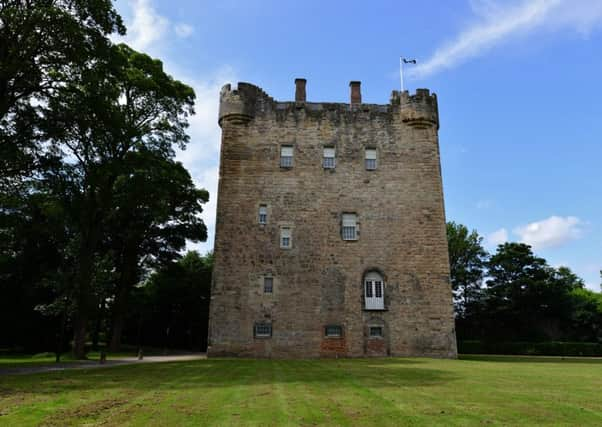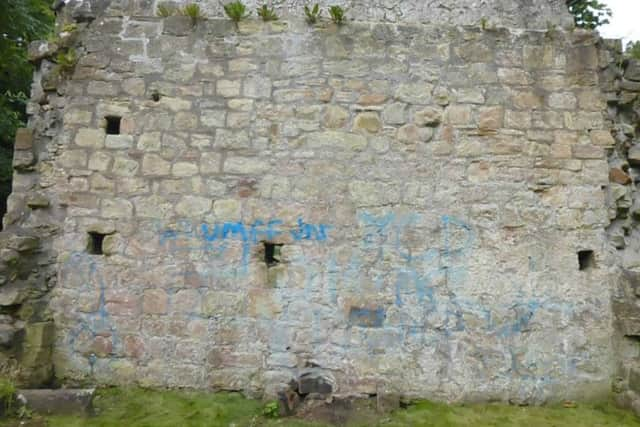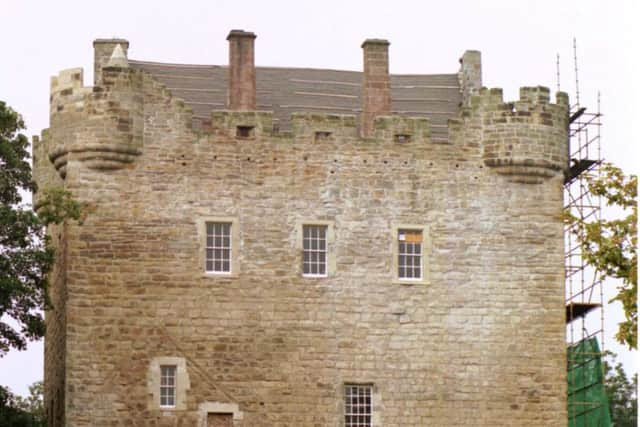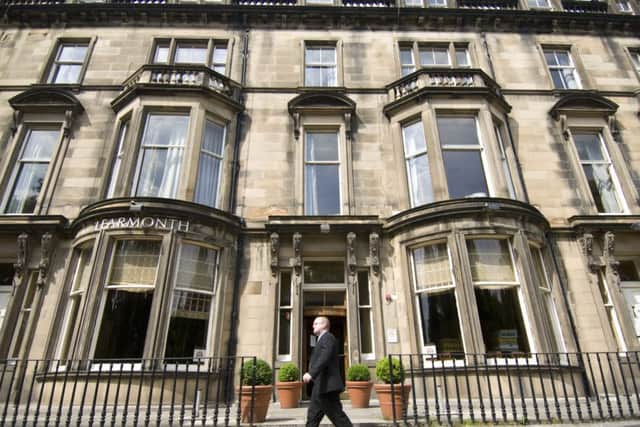Five parts of Scotland you didn't know were cursed


From ancient towers and castles, to a ‘miracle’ stone, a terrifying mummy and even a library, we take a look at the stories behind five Scottish curses.
The curse of Alloa Tower
In the 16th century, the 1st Earl of Mar, John Erskine, reputedly helped himself to stones from the ruined Cambuskenneth Abbey near Stirling in order to build his new mansion, Mar’s Wark, a grand renaissance building.


Advertisement
Hide AdAdvertisement
Hide AdFollowing the supposed thievery, the abbot was said to be so enraged he cursed the Erskine family, making eight predictions of the family’s fate.
Among the curses, the abbot said the Earl’s new home “shall never be finished”, the family would one day raise its banner “in a field of blood”, that the Earl’s children would be “numerous but of little honour” and three would “never see the light”.
He also said that Alloa Tower - the ancestral home of the Erskine family - “shall be a ruin and a beacon until an ash sapling shall spring from its topmost stone”.
Eerily, some of the Abbot’s predictions did indeed come true.


The Earl’s children did not achieve any honour, the eldest was disinherited by his father, and only succeeded him by a couple of years before dying from a opium-related death in 1828. Out of his eight children, three were in fact born blind (thus fulfilling the prophecy that they “would never see the light”).
Also - and though the Erskine family prospered for many years as governors of Stirling and Edinburgh Castle, guardians of Mary, Queen of Scots and James VI and secretaries of state for Scotland - all was lost with the 6th Earl of Mar, who fell out spectacularly with George of Hanover, and did indeed ‘raise his sovereign’s banner in a battle of blood’ at the Jacobite rising at Sheriffmuir in 1715.
The Alloa Tower, or the ‘woman’s dower’ (maybe called so because Lady Frances Erskine inherited it after her brother Thomas’ death) was observed in 1815 to have an ash sapling growing from its roof. From that time, the curse has lifted and the Tower and the Erskines have prospered once more.
Advertisement
Hide AdAdvertisement
Hide AdContrary to the curses prediction however, the Earl’s house was in fact finished and used by James VI and his bride, Anne of Denmark, in 1593. Latterly it became a brothel for the soldiers of Stirling Castle and a workhouse.


“It is really interesting story,” Alison Fraser, property manager of Alloa Tower said. “Some of things which the Abbot said did actually come true, which is really unbelievable.
“Interestingly, the Abbot said the only way the curse would be laid to rest was when ash sapling grew on the roof of the tower, and during the tower’s restoration, a lot of ash sapling grew”.
Boat of Garten
Deep in the river bed at the Boat of Garten in the Scottish Highlands, lurks one of Scotland’s most notorious water ghosts.


The story starts in 1865, when an unusual stone was erected in the area to commemorate a so-called miracle from several centuries before, which saw the river part in the same way it had for Moses and the Red Sea.
The story of caught the attention of a local holy man, 92-year-old William Grant of Slochd, said to have second sight.
Grant was part of a ultra-conservative Gaelic-speaking Calvinist group, known as ‘The Men’. Before his death, Grant spoke of a vision he had of the miracle sea and on March 1865 an inscribed stone was erected to commemorate the occasion, as per his instructions.
Advertisement
Hide AdAdvertisement
Hide AdThe stone divided the community and was derided by the Free Church minister at that time. ‘Pro stone’ followers began to worship the stone instead of going to church. Eventually, in a fit of rage, the stone was smashed and fragments cast into the river. The perpetrators were never found.
According to legend, the stone was then cursed and guarded by a malevolent water-demon, who protects it savagely to this day.
Anyone touching it or attempting to move it is said to become prey to this aquatic, demonic being.


In fact, one story goes that a large part of the stone was once removed to be used as a doorstep on the nearby Knock Farm, at this point the demon entered the home. One by one the family were said to die off in strange circumstances.
When the last member of the family had died, the next owners returned the stone to the river, where it has remained ever since.
It is still there to this day.
The Hanging Tree at Fort William
An old oak tree - that had stood outside the fort walls for 300 years and used in the 18th century to hang Highland clansmen - was felled in the 1970s to make way for the town’s new library.
This act of vandalism according to some locals, would bring with it the Gaelic witchcraft prophecy of the “Buidseachd” - pronounced “Bootchach” - a curse of ill omen.
Advertisement
Hide AdAdvertisement
Hide AdAccordingly, or so was reported at the time, on the morning after Fort William Library was opened alongside where the hanging tree had stood, staff claimed they came in to find the front door ajar, despite having locked it the previous night.
They also claimed books and paintings had been strewn over the floor, they heard toilets flushing and strang dog-like noises and a typewriter chattering on its own.
Following the events, staff understandably fled
Twelve years later, a full size gondola cable car, which was suspended outside the premises of the library’s next door neighbour, Nevisport, to advertise Lochaber’s Nevis Range ski complex, plunged 15ft down onto the pavement.
The cable car had broken free from its moorings.
It fell from the top of its 15ft high anchorage, leaving exposed for all to see, its huge steel fixing bracket - looking for all the world like a gibbet or scaffold.
Many locals claimed it was the ‘Buidseachd’ again
Kinneil Kirk
The 12th century Kinneil Kirk boasts 350-year-old curse from a banished minister.
Rev William Wishart served from 1649 until he joined a dissenting presbytery, recognising God and not Parliament as the ultimate authority.
Advertisement
Hide AdAdvertisement
Hide AdHe left with many of his congregation, risking penalty of death as well as the confiscation of property.
And in 1662 he and over 400 fellow ministers were banished from their churches and manses.
A local tradition states Rev Wishart preached a farewell sermon at Kinneil Kirk where he put his hands on the bible.
He is alleged to have said: “The proud mansion on the other side of the burn will bow three times to the old church before it is all down.”
He added that the first man who tried to demolish the church would not die a natural death.
At least one effort to demolish the walls of the church apparently resulted in the death of a man employed when he was hit by falling masonry.
Last year, local residents hoped the curse would catch up with local vandals who had spray painted the kirk remains.
Advertisement
Hide AdAdvertisement
Hide AdSpeaking to the local press, Maria Ford, chair of the Friends of Kinneil charity, said: “There is a death curse on the church which was put in place to protect the building.
“Someone died there before and people put it down to the curse.
“If it’s going to scare the shit out of these vandals, they will hopefully leave the church alone.
The curse of the Mummy, Edinburgh, Learmouth Gardens
In the mid 1930s, a grand house was occupied by baronet Sir Alexander Seton, and his family. The family took a trip to Egypt and brought back a souvenir that they would later regret ever having set eyes upon.
The trip to Egypt incorporated a visit to the Temple of Luxor and in spite of the fact that it was illegal to remove anything from the tombs, Lady Seton picked up a small bone as a memento and brought it back to Scotland with her. The bone was placed in a glass case in the dining room.
The family had hardly settled back into normal life when strange and disturbing things started to happen. Crashing sounds were heard and furniture was found in disarray. Ornaments were found broken in rooms that had been empty. Lady Seton fell suddenly and inexplicably ill with a mystery complaint. Time and time again, the family were disturbed by strange occurrences which had no explanation at all. Strangest of all was a ghostly figure in long robes that appeared in the house to several people, residents and visitors alike. Servants of the family became unnerved and sought employment elsewhere.
At one point Sir Alexander lent the bone to a scientist friend and the ghost disappeared from Learmonth Gardens, only to be seen in the home of his friend. Such a story could not remain a secret long, and soon the Edinburgh newspapers were full of stories of the ‘Curse of the Pharaoh’ as they called it.
Advertisement
Hide AdAdvertisement
Hide AdThe bone was returned to Learmonth Gardens and once more the furniture seemed to take on a life of its own. Sir Alexander himself became ill and eventually surrendered the bone to a priest. The bone was exhumed and then burnt and thankfully the torment came to an end.
